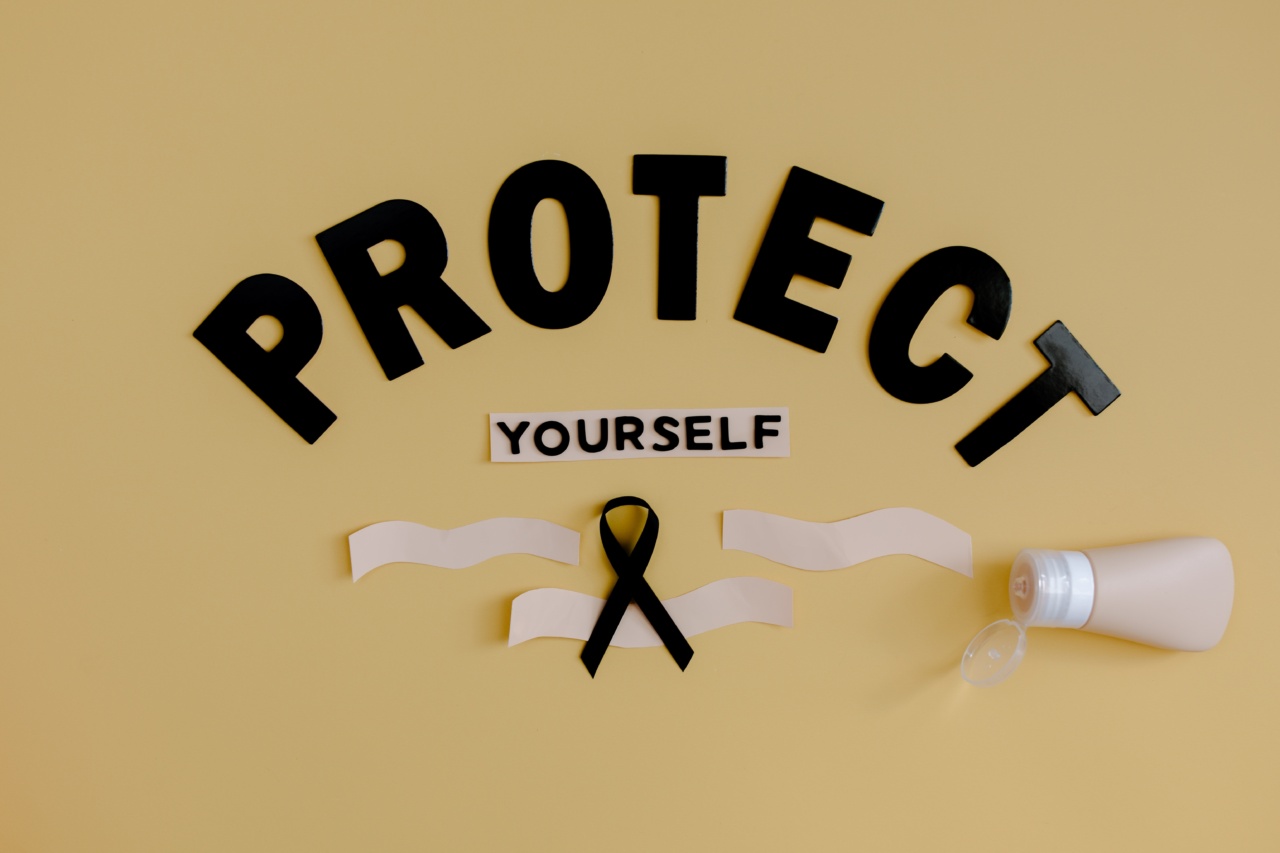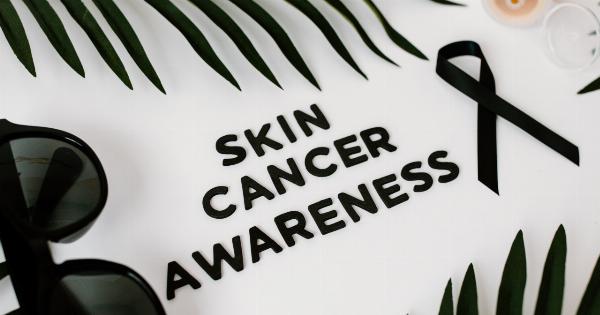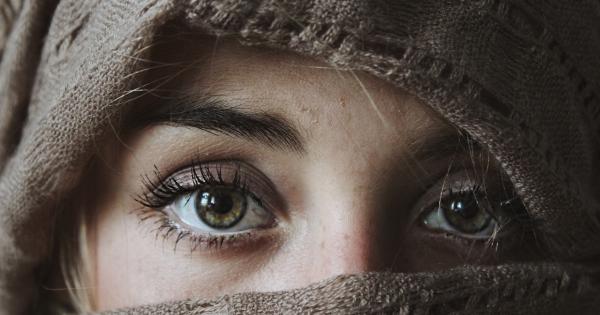The sun is an essential source of life on Earth and provides us with warmth, vitamin D, and a general sense of well-being. However, too much exposure to the sun’s harmful ultraviolet (UV) radiation can have devastating consequences on our skin.
Skin cancer, the most common type of cancer globally, is strongly linked to excessive sun exposure. It is crucial to understand the dangers associated with prolonged sun exposure and take necessary precautions to protect our skin from potential harm.
1. The Role of UV Radiation in Skin Cancer
Ultraviolet radiation is a form of electromagnetic radiation emitted by the sun. It consists of three types: UVA, UVB, and UVC. UVC is absorbed by the Earth’s atmosphere and does not reach the surface.
However, both UVA and UVB can penetrate through our atmosphere and affect our skin.
UV radiation damages the DNA in our skin cells, increasing the risk of developing skin cancer. It can mutate the genes responsible for regulating cell growth and causes uncontrolled cell division.
This abnormal cell growth leads to the formation of cancerous tumors.
2. Types of Skin Cancer
There are several types of skin cancer, with the most common being basal cell carcinoma (BCC), squamous cell carcinoma (SCC), and melanoma.
Basal Cell Carcinoma (BCC): BCC typically appears as a small, shiny bump or a red patch on the skin. It rarely spreads to other parts of the body but can cause local damage if left untreated.
Squamous Cell Carcinoma (SCC): SCC often appears as a crusted or scaly patch of skin, with the potential to grow and spread to nearby lymph nodes if not detected early.
Melanoma: Melanoma is the most severe form of skin cancer and can be life-threatening if not caught in its early stages. It usually presents as an irregularly shaped mole or lesion that may change in size, color, or shape.
3. Risk Factors for Skin Cancer
While excessive sun exposure is the primary risk factor for developing skin cancer, certain factors can further increase our susceptibility:.
Fair Skin: People with lighter skin tones have less melanin, making them more prone to damage from UV radiation.
Family History: If a close family member has had skin cancer, your risk is higher.
Personal History: If you have previously had skin cancer, your chances of developing it again increase.
Outdoor Activities: Regular participation in outdoor activities exposes you to more sunlight and increases the risk of sun damage.
Tanning: Suntanning, whether outdoors or in tanning beds, significantly raises the risk of skin cancer.
4. The Importance of Sun Protection
Reducing sun exposure and practicing sun protection methods are crucial to minimizing the risk of skin cancer. Here are some preventive measures to consider:.
Use Sunscreen: Apply a broad-spectrum sunscreen with an SPF (sun protection factor) of 30 or higher, and ensure it is water-resistant if swimming or sweating. Reapply every two hours or more frequently if needed.
Seek Shade: Take breaks from direct sun exposure, especially during peak hours when the sun’s rays are strongest (typically between 10 am and 4 pm).
Wear Protective Clothing: Cover exposed skin with lightweight, long-sleeved shirts, pants, wide-brimmed hats, and sunglasses to shield yourself from harmful UV rays.
Avoid Tanning Beds: Tanning beds emit intense UV radiation that can increase your risk of skin cancer.
Regular Skin Examinations: Perform self-examinations of your skin regularly, looking for any changes in moles, freckles, or spots. Consider annual check-ups with a dermatologist.
5. Protecting Children from the Sun
Children are particularly vulnerable to the harmful effects of UV radiation, as excessive sun exposure during childhood can significantly contribute to the development of skin cancer later in life.
Implement the following measures to safeguard children from the sun:.
Limit Exposure: Keep infants and young children out of direct sunlight as much as possible.
Sunscreen Application: Apply sunscreen with at least SPF 30 or higher on children over six months old. Ensure it provides broad-spectrum protection and is water-resistant.
Protective Clothing: Dress children in lightweight, long-sleeved shirts, pants, hats, and sunglasses to cover their skin.
Education: Teach children about sun safety, including the importance of seeking shade and avoiding tanning beds.
6. The Role of Vitamin D
While excessive sun exposure can lead to skin cancer, sunlight is also an essential source of vitamin D, which is crucial for our overall health. Striking a balance between sun exposure and vitamin D production is necessary.
It is generally recommended to obtain vitamin D from alternative sources such as diet or supplements, especially for individuals at higher risk of skin cancer due to fair skin or a personal or family history of the disease.
7. Early Detection and Treatment
Early detection of skin cancer significantly increases the chances of successful treatment. Regularly examining your skin and promptly reporting any changes to a healthcare professional is vital.
Dermatologists can also perform professional skin screenings, especially for individuals who have a higher risk of developing skin cancer.
Common signs to watch out for include changes in the shape, color, size, or texture of moles, as well as the development of new growths or sores that do not heal. If you notice any abnormalities, make an appointment for further evaluation.
8. Conclusion
Excessive sun exposure can have severe consequences, leading to an increased risk of skin cancer. It is crucial to prioritize sun protection methods, including sunscreen use, seeking shade, and wearing protective clothing.
Additionally, educating children about sun safety and promoting regular skin examinations are important steps toward reducing the prevalence of skin cancer.




























